Materials Day 2021

Materials Day 2021 | Science & Technology of the Casimir Effect
Friday, October 15, 2021
8:30am – 5pm
100% Virtual – Zoom Webinar
Register to attend (scroll down)
Speakers
Vladimir Aksyuk, National Institute of Standards and Technology
Department of Commerce Project Leader
National Institute of Standards and Technology

Lecture Title: A NEMS System for Probing Casimir Energy Corrections to the Superconductor Condensation Energy
Lecture Abstract: A nanoelectromechanical system custom-designed for detection of changes in the Casimir energy will be described. The approach uses a superconductor as one of the cavity materials and experiments are conducted to detect a change in the superconductor condensation energy, via the change in the transition temperature, Tc, due to the mechanical modulation of the cavity size. Using a thin Pb film and opposing Au surface, we observe no shift in Tc >12 µK down to a minimum spacing of approximately 70 nm at zero applied magnetic field.
Speaker Bio: Vladimir Aksyuk is the Project Leader in the Photonics and Optomechanics Group. He received a B.S. in Physics from Moscow Institute of Physics and Technology and a Ph.D. in Physics from Rutgers University. Following research as a Member of Technical Staff and then Technical Manager at Bell Labs, he joined the research staff at NIST. He is interested in nanofabricated systems tightly coupling optical, plasmonic, electrical, thermal and mechanical degrees of freedom at the nanoscale.
Giuseppe Bimonte, Università Degli Studi Di Napoli Federico II
Associate Professor of Physics
Università Degli Studi Di Napoli Federico II

Lecture Title: Hide It to See It Better: A Universal Experimental Test for the Role of
Free Charge Carriers in the Thermal Casimir Effect.
Lecture Abstract: We propose a universal experiment to measure the differential Casimir
force between a Au-coated sphere and two halves of a structured plate
covered with a P-doped Si over-layer. One half of the structured plate is
insulating, while its second half is made of gold. The differential
Casimir force is computed within Lifshitz theory using four approaches
that have been proposed in the literature to account for the role of free
charge carriers in metallic and dielectric materials interacting with quantum
fluctuations. According to these approaches, Au at low frequencies is
described by either the Drude or the plasma model, whereas the free charge
carriers in dielectric materials at room temperature are either taken into
account or disregarded. It is shown that the values of differential
Casimir forces, computed in the micrometer separation range using these
four approaches, are widely distinct from each other and can be easily
discriminated experimentally. It is shown that for all approaches the
thermal component of the differential Casimir force is sufficiently large
for direct observation. The importance of the proposed experiment for
the theory of quantum fluctuations is discussed.
Speaker Bio: Giuseppe Bimonte is associate professor in the physics dept. of “Federico
II” Naples University (Italy). He received a B.S. in physics from Naples
University, and a Ph.D. in Physics from Syracuse University (U.S.A.) He is
interested in experimental and theoretical aspects of fluctuational
electrodynaimcs (Casimir effect, radiative heat transfer, Casimir-Polder
interaction).
Ho Bun Chan, The Hong Kong University of Science and Technology
Professor of Physics
The Hong Kong University of Science and Technology
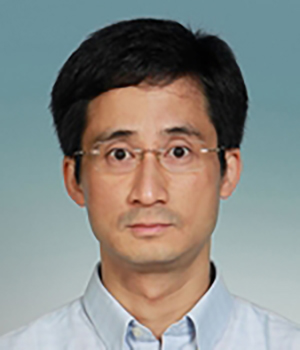
Lecture Title: Strong Geometry Dependence of the Casimir Force Between Nanoscale Silicon Gratings
Lecture Abstract: One of the remarkable properties of the Casimir force is its non-trivial dependence on the shape of the interacting objects. Experiments using the corrugated surface of gratings have demonstrated the deviation of the Casimir force from the proximity force approximation. Here, we present measurements of the Casimir force between two silicon structures, both of which contain rectangular corrugations. By overcoming the alignment difficulties, the two gratings interpenetrate when the separation between them is reduced. Our data shows that at certain separations, the proximity force approximation utterly breaks down. Moreover, we observe a non-zero, distance-independent Casimir force over certain range of displacement.
Speaker Bio: Professor Ho Bun Chan obtained his PhD degree from Massachusetts Institute of Technology in 1999. He was a postdoc at Bell Laboratories from 1999 to 2000. In 2001, he became a member of the technical staff. From 2004 to 2009, he was an assistant professor in the Department of Physics at University of Florida. In 2009 he became an associate professor. He joined the Department of Physics of the Hong Kong University of Science and Technology in 2010 as an associate professor and became professor in 2018.
Ricardo Decca, Indiana University-Purdue University Indianapolis
Professor of Physics
Indiana University-Purdue University Indianapolis

Lecture Title: Precision Measurements of the Casimir Interaction Between a Au-sphere and an Au-plate: What we Know and What we Don’t
Lecture Abstract: Current and historic results in the measurements between Au spheres of different radii and Au plates will be presented. Special emphasis will be put in the effect of approximations used to calculate the interaction when the actual dielectric function of Au and geometry of the experiment are considered. Residual effect due to electrostatic contributions will be discussed. Measurements with separations from 150 nm to over 8 microns between sphere and plate will be described.
Speaker Bio: Ricardo S. Decca is a professor of physics and chair of the Department of Physics at at Indiana University-Purdue University Indianapolis in Indiana. He received his Licenciatura and Ph.D. degrees in physics at the Instituto Balseiro in Bariloche, Argentina. Part of his research focuses in using classical and quantum oscillators to produce precision measurements of fundamental interactions. His work in this area has lead to his election as a Fellow of the American Physical Society.
Mehran Kardar, Massachusetts Institute of Technology
Professor of Physics
Massachusetts Institute of Technology
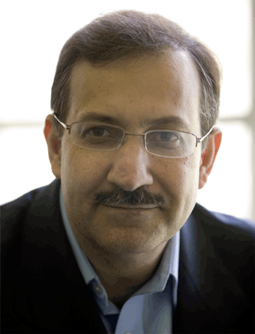
Lecture Title: Near Field Propulsion Forces from Nonreciprocal Media
Lecture Abstract: Symmetry arguments suggest a ratchet-like lateral Casimir force between two plates at different temperatures, and with broken inversion symmetry. We find that this is not sufficient, and at least one plate must be made of nonreciprocal material. This setup can be used as an engine that coverts heat radiation into mechanical force. Although the lateral force diverges in the near field regime, an Onsager symmetry limits the engine efficiency to the Carnot value.
Speaker Bio: Mehran Kardar, Francis Friedman Professor of Physics at MIT, obtained his BA degree from Cambridge University in 1979, and a PhD in Physics (MIT) in 1983. He was a Junior Fellow of the Harvard Society of Fellows for three years, before joining the MIT faculty in 1986. His specialty is Statistical Physics, having authored two textbooks in this area, and conducted research on a variety of topics spanning soft-matter, biophysics, and fluctuation-induced phenomena. He is a fellow of the American Physical Society, the American Academy of Arts and Sciences, and the National Academy of Sciences.
Galina L. Klimchitskaya, Russian Academy of Sciences; Peter the Great Saint Petersburg Polytechnic University
Leading Researcher; Professor of Physics
Russian Academy of Sciences; Peter the Great Saint Petersburg Polytechnic University
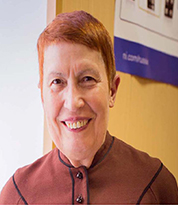
Lecture Title: Unusually Big Thermal Effect in the Casimir Force from Graphene: Theory
and Implication to Resolution of the Casimir Puzzle
Lecture Abstract: From dimensional considerations, it follows that the thermal regime in the
Casimir force is characterized by the thermal length \hbar c/(k_B T) which
is equal to 7.6 mum at T=300K. However, the Lifshitz theory using the Drude
model at low frequencies predicted rather big thermal effect in the Casimir
force between two parallel metallic plates already at separations of a few
hundred nanometers. This prediction was excluded by the measurement data of
several precise experiments performed by two experimental groups. Graphene
is a novel prospective material which possesses unusual mechanical, optical
and electrical properties prospective for applications in nanotechnology.
In 2009, Gomez-Santos [1] predicted that the Casimir force between two
sheets of pristine graphene should possess unusually big thermal effect
already at separations of several tens nanometers. Recently big thermal
effect from real graphene sheet characterized by some nonzero values of the
energy gap and chemical potential at short separations has been measured
and found in a very good agreement with theory based on first principles of
quantum electrodynamics at nonzero temperature [2,3]. We discuss these
results and their role in resolution of complicated problems arising in
application of the Lifshitz theory to real material bodies[4,5].
References
[1] G. Gomez-Santos, Phys. Rev. B 80, 245424 (2009).
[2] M. Liu, Y. Zhang, G. L. Klimchitskaya, V. M. Mostepanenko, and
U. Mohideen, Phys. Rev. Lett. 126, 206802 (2021).
[3] M. Liu, Y. Zhang, G. L. Klimchitskaya, V. M. Mostepanenko, and
U. Mohideen, Phys. Rev B 104, 085436 (2021).
[4] G. L. Klimchitskaya and V. M. Mostepanenko, Eur. Phys. J. C 80,
900 (2020).
[5] G. L. Klimchitskaya and V. M. Mostepanenko, Phys. Rev. D 103,
096007 (2021).
Speaker Bio: Galina L. Klimchitskaya graduated from the Department of Theoretical Physics of
St. Petersburg State University, St. Petersburg, Russia, in 1971. She obtained
the PhD degree in 1975 from the same University and the degree of Doctor in
Physical and Mathematical Sciences (second scientific degree in Russia which is
much higher than PhD) from Moscow State University, Moscow in 1985. In 1992,
she obtained the academic status of full professor. Now she is working as the
Leading Researcher of the Central Astronomical Observatory at Pulkovo of the
Russian Academy of Sciences, and Full Professor of the Peter the Great Saint
Petersburg Polytechnic University at St. Petersburg, Russia. She is the author
of several books and about 280 papers in the fields of atomic physics, Casimir
effect, condensed matter physics, graphene, and constraints on non-Newtonian
gravity and axion-like particles. Galina L. Klimchitskaya worked as a Visiting
Professor at the Universities of USA, Germany, Italy, Brazil and other countries.
She has taken part as an invited speaker in about 80 international conferences.
Currently Galina L. Klimchitskaya is the member of the Editorial Boards of the
International Journals Physical Review A and Europhysics Letters.
Ulf Leonhardt, Weizmann Institute of Science
Professor of Physics
Weizmann Institute of Science

Lecture Title: Casimir Cosmology
Lecture Abstract: In 1998 astronomers discovered that the expansion of the universe is accelerating. Somehow, something must have made gravity repulsive on cosmological scales. This something was called dark energy, and it amounts to about 70% of the total mass of the universe. It has been conjectured that dark energy is a form of vacuum energy, but its prediction from quantum field theory has failed by many orders of magnitude. The lecture shows how a theory informed by empirical evidence on Casimir forces does produce the correct order of magnitude and agrees with astronomical data, and how subtle this is.
Speaker Bio: Ulf Leonhardt joined the Weizmann Institute of Science as Professor of Physics in 2012 after an international career. Ulf Leonhardt was born in Schlema, in former East Germany, on October 9th 1965. He studied physics at Friedrich-Schiller University Jena, at Moscow State University and at Humboldt University Berlin where he received his PhD in 1993. He was a Visiting Scholar at the Oregon Center for Optics in the US, a Habilitation Fellow at the University of Ulm in Germany and a Göran-Gustafson and Feodor-Lynen fellow at the Royal Institute of Technology in Stockholm, Sweden. From 2000 until 2012 he was the Chair in Theoretical Physics at the University of St Andrews, UK.
Umar Mohideen, University of California, Riverside
Distinguished Professor of Physics
University of California, Riverside

Lecture Title: Understanding Zero Point Photon Scattering in Real Materials through Precision Casimir Force Measurements
Lecture Abstract: We use precision measurement of the Casimir force to gain a fundamental understanding of the physics of zero point photon scattering in real materials. Using precision measurements with magnetic and non magnetic materials we have been able to identify areas of disagreement with current theoretical understanding of the Casimir effect. Recently, we have used precision Casimir force measurements with graphene, where the theory is more robust and based on first principles, to highlight interesting physics.
Speaker Bio: The Mohideen group at the University of California, Riverside, CA, pioneered a variety of custom designed ultra high vacuum atomic force microscope based microfabricated cantilever techniques for performing precision measurements of the Casimir force for over two decades. The group has over 100 publications, including review articles and books with over 12,000 citations.
Jeremy Munday, University of California, Davis
Professor of Electrical and Computer Engineering
University of California, Davis

Lecture Title: Engineering the Casimir Effect Through Geometry and Anisotropy
Lecture Abstract: The Casimir effect is a remarkable consequence of quantum electrodynamics and has found applications in physics, chemistry, and even biology. In this talk, I will discuss our work engineering the Casimir effect through both a material’s optical properties and its geometry. I will describe experiments where the geometry can greatly modify the strength and power-law of the force and how optically anisotropic materials can generate Casimir torques. Finally, I will discuss some of our recent work related to technological applications with switchable Casimir forces and other quantum effects using materials with electrically tunable optical properties.
Speaker Bio: Jeremy Munday is Professor at the University of California, Davis. He received his PhD in physics from Harvard, was a postdoc at Caltech, and then spent 8 years at the University of Maryland before moving to UC Davis. He is a fellow of the Optical Society of America and a recipient of the NSF CAREER Award, the ONR YIP Award, and DARPA YFA and the NASA Early Career Faculty Space Technology Research Award, as well as society awards including the OSA Adolph Lomb Medal, the IEEE Photonics Society Young Investigator Award, and the SPIE Early Career Achievement Award.
Alexander Stange, Digital Healthcare Group at Analog Devices; Boston University
Materials Engineer; Research Scientist
Digital Healthcare Group at Analog Devices; Boston University
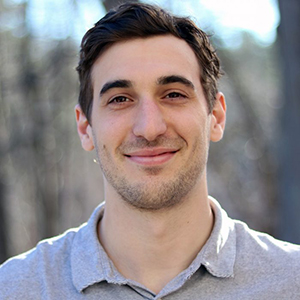
Lecture Title: Casimir Physics with MEMS
Lecture Abstract: Alexander will discuss a how a modified capacitive micro-electromechanical system (MEMS) sensor can be used to measure the Casimir Effect in ambient conditions. Using a feedback-assisted pick-and-place assembly process, it is possible to attach various microstructures onto the post-release MEMS, converting it from an inertial force sensor to a direct force measurement platform with pN (piconewton) resolution. With this system we are able to directly measure the Casimir force between a silver-coated microsphere and gold-coated silicon plate. This device is a step towards leveraging the Casimir Effect for cheap, sensitive, room temperature quantum metrology.
Speaker Bio: Alexander Stange currently works in the Digital Healthcare division of Analog Devices, Inc. where he focuses on designing, building, and testing new types of biosensors using functionalized nanomaterials. Prior to this, Alex did his Doctoral research at Boston University’s Materials Science and Engineering division in David Bishop’s group. During his time at BU, Alex built MEMS and NEMS systems to measure and study the Casimir Effect. Alex also continues to work at BU as a Research Scientist in the MSE division, continuing collaborations with members of the Bishop group.
Lilia Woods, University of South Florida
Associate Chair of the Department of Physics; Professor of Physics
University of South Florida
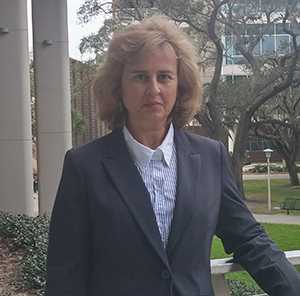
Lecture Title: Fluctuation-Induced Interactions in Quantum Materials
Lecture Abstract: The Casimir force is a universal interaction originating from electromagnetic fluctuations between objects, however, its magnitude, sign, and scaling laws are strongly affected by the materials response properties and boundary conditions of the objects. The expanding materials library with systems characterized by Dirac fermions and nontrivial topology has opened up new opportunities to probe fundamental physics concepts through Casimir phenomena. In this presentation, the electronic structure and dielectric response of the graphene family, Chern insulators, and Weyl semimetals among others will be reviewed in the context of electromagnetic interactions. By emphasizing the topologically nontrivial features, novel results stimulating new directions of Casimir phenomena will be discussed.
Speaker Bio: Lilia M. Woods has obtained her PhD in Condensed Matter Physics under the guidance of Prof. Gerald D. Mahan. After graduation, she became a postdoc at Oak Ridge National Lab, followed by a second postdoc at the Naval Research Lab, where she held the prestigious Director’s funded NRC Fellowship. In 2003 she became an Assistant Professor at the University of South Florida and in 2012 she was promoted to Full Professor. Lilia M. Woods’ diverse research in theoretical and computational condensed matter physics has been continuously funded by the National Science Foundation and the Department of Energy since 2006. She has been recognized by the USF Outstanding Research Achievement Award (three times) and by the Jewell Faculty Excellence Award. She is a member of the National Academy of Inventors. She has received the International Association of Advanced Materials Medal for 2018. Lilia Woods was also elected as an APS Fellow in 2017 and an AAAS Fellow in 2019.
About this event
The Casimir effect is a phenomenon that arises due to fluctuations in the quantum vacuum. In its simplest version, uncharged metal plates that are spaced much closer than a micron freeze out the long wavelength modes of these fluctuations. The lower density of modes between the plates in comparison to the density of modes outside the plates gives rise to a net attractive force between the plates. One can refer to the space between the plates as a Casimir vacuum, a region where the energy density is less than that found in free space. The Casimir effect has significant implications for fundamental issues in physics and also allows ultra-precise quantum measurements to carried out. In this workshop, we will have an open discussion, among the world’s leading scientists in the field, of both the science and technology of the Casimir effect.
Agenda
30 minute presentations, plus 10 minutes for questions
8:30 Welcome- Dean Kenneth Lutchen, introduced by David Bishop
Session 1- Chair: David Bishop
8:40 Ricardo Decca, 9:20 Ho Bun Chan, 10:00 Lilia Woods
10:40 Break
Session 2- Chair: Robert Jaffe
11:00 Mehran Kardar, 11:40 Galina Klimchitskaya
12:20 Lunch time talk: Ulf Leonhardt
Session 3- Chair: Andrei Ruckenstein
1:00 Giuseppe Bimonte, 1:40 Alexander Stange, 2:20 Umar Mohideen
3:00 Break
Session 4- Chair: David Campbell
3:20 Vladimir Aksyuk, 4:00 Jeremy Munday
4:40 Conclusion with David Campbell
Planning Committee
Coordinating co-chairs: David Bishop (CELL-MET, BU) and David Campbell (BU)
Closed Captioning
Boston University strives to be accessible, inclusive and diverse in our facilities, programming and academic offerings. Your experience in this event is important to us. If you have a disability (including but not limited to learning or attention, mental health, concussion, vision, mobility, hearing, physical or other health related), require communication access services for the deaf or hard of hearing, or believe that you require a reasonable accommodation for another reason please contact Ruth Mason, rmason@bu.edu, to discuss your needs. Please request accommodations by September 24th.











